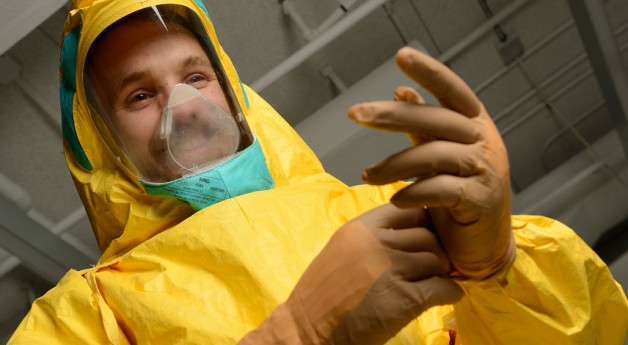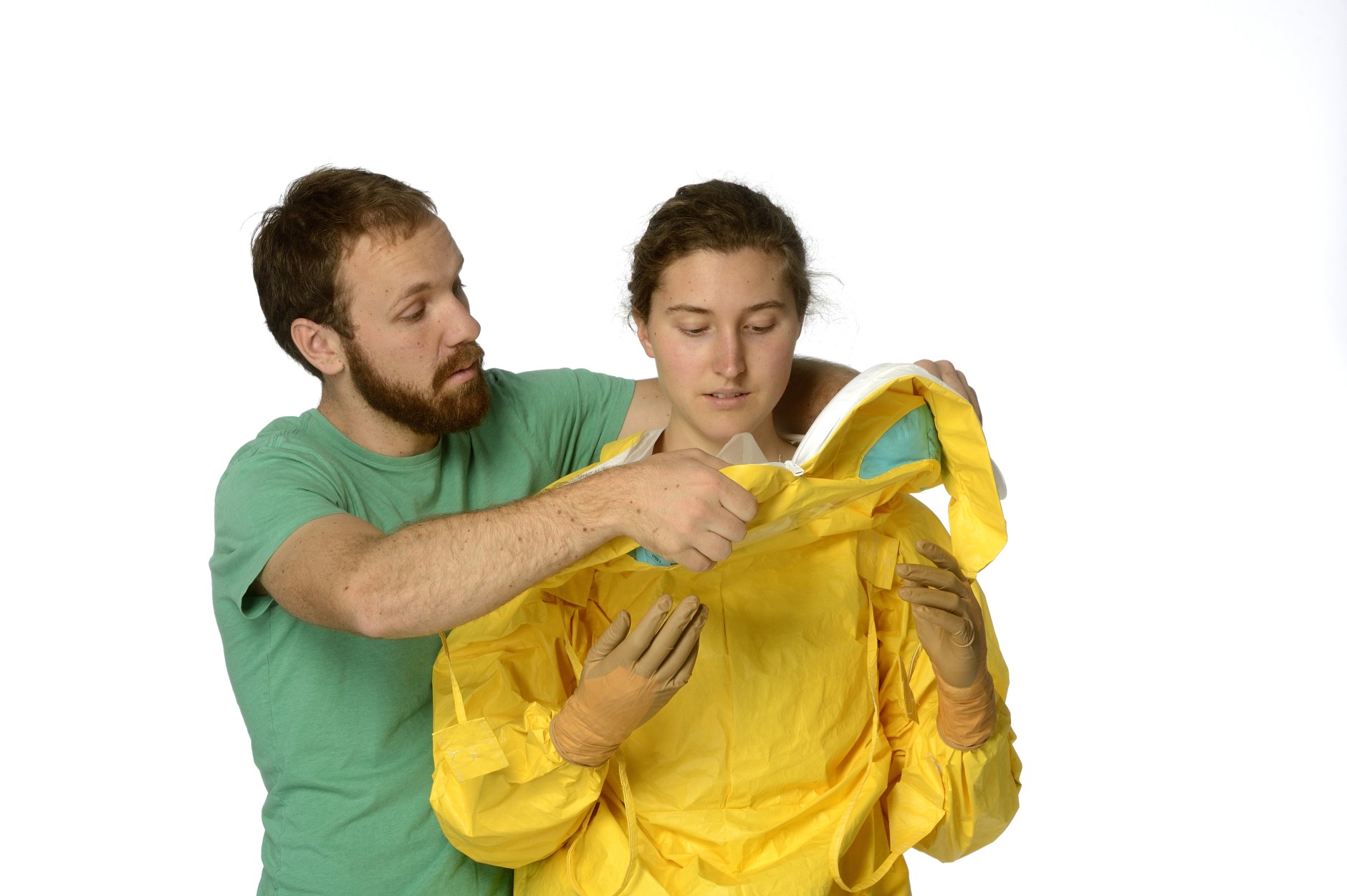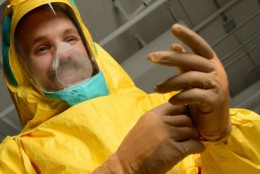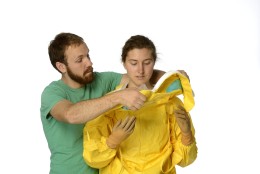



WASHINGTON — It’s one of the enduring images of the Ebola crisis — the hazmat-suited medical workers tending to the sick. Now, that protective gear is getting a major redo, thanks in large part to a team of bioengineers from Maryland.
At the height of the epidemic last year, a team from the Johns Hopkins University Center for Bioengineering Innovation and Design accepted a challenge: to redesign the protective gear dreaded by medical workers and patients alike.
Professor Youseph Yazdi led the effort and says the team started by listing all the things that were wrong with the suits already in use. They boiled it down to issues of comfort and safety.
“The major thing I would say is the time and complexity of doffing the garment,” he says, referring to the multi-step process of removing the gear.
“Every step has potential for someone to make a mistake and has an opportunity for someone to get infected,” he explains.
Using new zippers in the back of the suit and other innovations, the design team was able to streamline the process from 20 minutes to one or two minutes without compromising safety.
Then they addressed problems with the temperature inside the suit, as well as visibility concerns with the goggles.
There was also the matter of appearances. The old suits scared people who came in for treatment because they could not see the faces of medical personnel.
“People often shied away from Ebola treatment units or Ebola care centers because they were afraid of these workers because they looked like they were from outer space,” says Yazdi.
The new suits enable patients to look their health care provider in the eye, giving them a sense of ease and building trust.
The redesign effort began last October at Hopkins with the Johns Hopkins team divided into three groups — each one handling a different part of the suit.
“We had people pleading to join the group because we had to cap the participants,” remembers Yazdi.
He says there was an emotional pull for all concerned: a desire to make a difference driven by images of dying men, women and children coming from West Africa.
“There was a sense of ‘We know there is a global crisis out there — we are designers; this is what we can do to help,'”
According to numbers compiled by the World Health Organization and the U.S. Centers for Disease Control and Prevention, the 2014 Ebola epidemic claimed more than 11,000 lives. And while the crisis has faded from the headlines, Yazdi says it is only a matter of time before there is a new outbreak to deal with.
He emphasizes the world needs to be prepared, and his hope is new, better protective gear will be readily available before another deadly infectious disease rears its ugly head.
Johns Hopkins University has already signed a deal with DuPont to start production on this next generation of protective garments. The design will incorporate many of the innovative features developed by Yazdi and his team.
DuPont representatives say they hopes to get the first new Ebola suits on the market no later than next summer.





